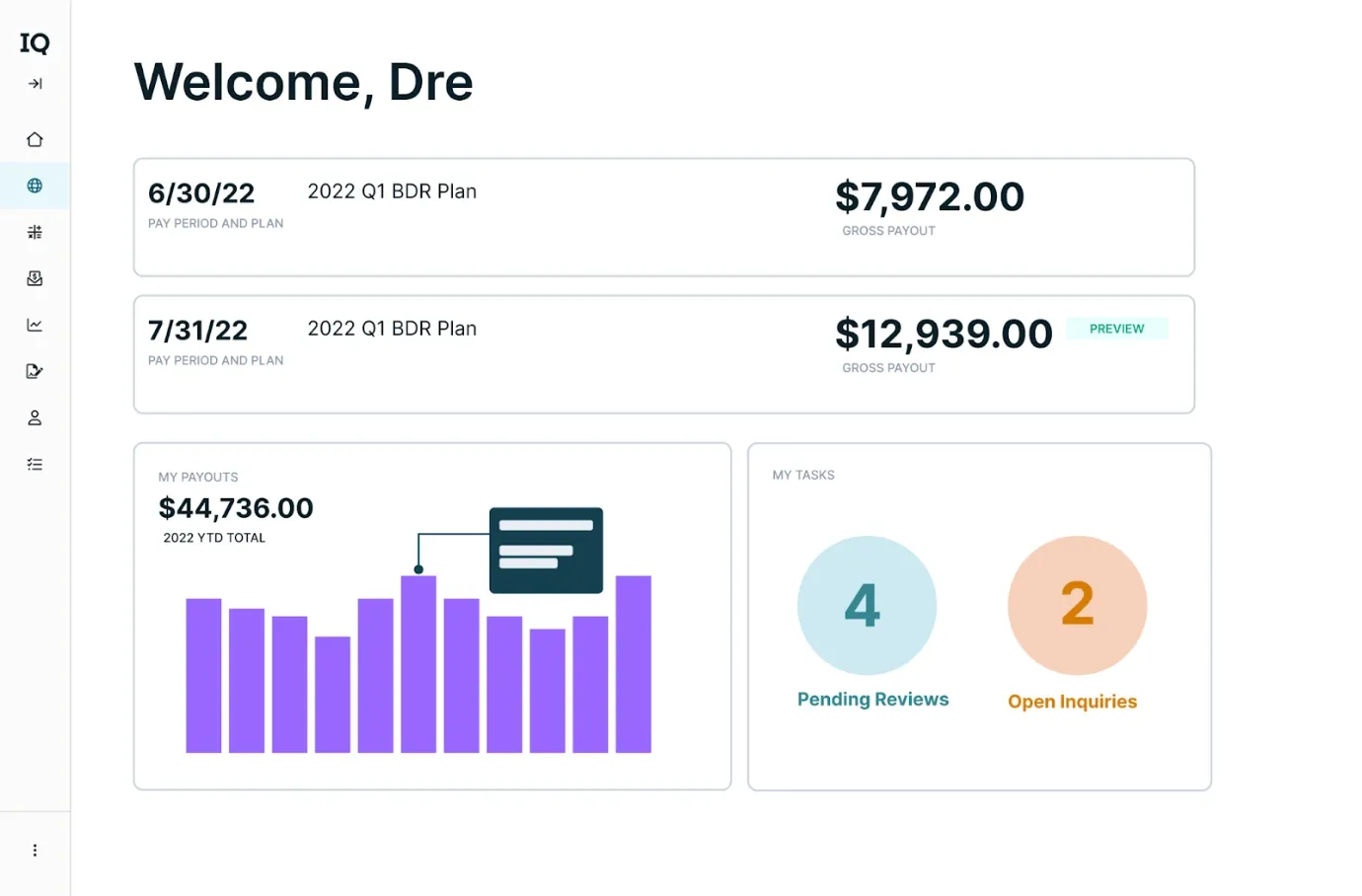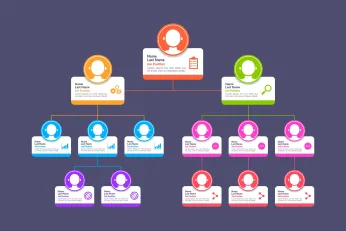Komisi Penjualan SaaS B2B- Panduan Lengkap
Pelajari cara merancang rencana komisi penjualan B2B SaaS yang efektif yang mendorong kinerja, menarik talenta terbaik, dan menyelaraskannya dengan pertumbuhan jangka panjang. Temukan berbagai struktur komisi, tantangan umum, dan perangkat lunak terbaik untuk mengoptimalkan strategi kompensasi penjualan Anda.
Di halaman ini
B2B SaaS sales commissions have been evolving over the past few years. More companies are adopting innovative pay models as a way of boosting sales performance with some reporting significant increases in sales productivity.
In such a selling ecosystem as the B2B SaaS, cycles are generally long, products complex, and usually involve recurring revenues. This complexity requires a fairly structured approach to defining sales compensations.
This blog is going to provide a definitive guide to B2B SaaS Sales Commissions; the multiple models, best practices, and strategies that will help companies be more effective in setting up their sales compensation plans.
Understanding sales commissions in B2B SaaS
Sales commissions in B2B SaaS are performance-based incentives given to sales teams based on criteria like the number of deals closed, contract value, or meeting specific sales targets. These incentives encourage sales representatives to achieve or exceed their goals, aligning their efforts with the company's revenue objectives. The role of the B2B SaaS sales commission extends beyond the close of a sale. It is an intelligent way to:
- Drive the right behaviors: Compensation, when it is tied to defined metrics, drives sales activity that supports business objectives.
- Attract and retain top talent: Competitive commission structures help SaaS companies attract and retain the best sales professionals in a dynamic labor market.
- Drive growth: Well-designed commission plans can push salespeople to step outside their comfort zones and drive rapid business growth.
- Customer satisfaction: By relating the success of customers to commissions for sales teams, there can be long-term incentives concerning customer relationships.
Using Compass, they streamlined their commission management by setting up multiple plans for different teams and objectives on a single platform. They also introduced gamification, awarding badges and points to motivate sales members.
As a result, the platform saw a 94% adoption rate, a 12% increase in payouts, and an average distribution of 55,000 points per month, demonstrating how simplified commission plans and gamification can boost both satisfaction and growth.
How do B2B SaaS commission structures differ from traditional models in several ways?
Traditional commission models typically involve straightforward percentage-based payouts on each sale, with a focus on immediate revenue. They often lack complexity, rewarding sales reps based on short-term goals without considering long-term customer retention or recurring revenue. Here is the difference:
- Focus on recurring revenue: The SaaS model focuses on customer lifetime value rather than the one-time sale, so salespeople need to look beyond the first contract to upsell opportunities, renewals, and expansion.
- Longer sales cycles: Complex B2B sales can run into months, necessitating different commission timing. Some firms introduce milestone-based commissions to keep reps engaged during lengthier sales processes.
- Product complexity: SaaS products often require technical knowledge, which drives a different type of commission structure. Companies can include bonuses for product certification in their commission plans to encourage ongoing learning.
- Customer success metrics: Many SaaS companies tie their commissions to the usage and retention of your software by the customer.
- Multi-touch attribution: B2Bs typically involve a multi-touch selling process for a SaaS business, from getting the initial touchpoint to product demos and follow-up conversations. This kind of multi-touch process requires a commission structure that rewards different members of the team at various stages in the selling cycle.
What are the challenges in redesigning the B2B compensation plans?
Tension between sales and procurement: The current economic climate has intensified the conflict between B2B sales teams and customer procurement departments, as companies strive to maintain margins while customers seek to cut costs and consolidate suppliers.
1. Inadequate inclusion of pricing metrics
Despite a strong desire for strategic pricing, fewer than 10% of reviewed Sales Incentive Plans (sips) include price-based metrics. This lack of integration often leads to missed opportunities for aligning sales performance with broader corporate financial goals.
2. Complexity in design
Organizations frequently struggle with overly complex compensation structures that hinder the effective implementation of pricing metrics. Concerns about exposing confidential information further complicate the design process.
3. Setting realistic pricing targets
Companies face difficulties in establishing achievable pricing targets due to varying market conditions and internal capabilities. This issue is particularly pronounced in competitive markets where price sensitivity is high.
4. Behavioral misalignment
Without clear specifications on desired pricing behaviors, salespeople may engage in practices that are beneficial individually but detrimental to the organization as a whole.
Common types of sales commission structures
Below are the 6 most basic sales commission structures:
1. Gaji pokok ditambah komisi
This compensation plan model follows a fixed base salary with commissions on offer, subject to sales performance. It provides a base salary to sales representatives, meanwhile motivating them to reach higher levels with commissions.
The base and commission rates could be balanced according to requirements set by the company and the conditions prevailing in the market. It's effective because B2B SaaS companies generally have longer sales cycles.
The salesperson is assured of income even during long-drawn negotiations and, with it, compelled to close deals. Companies can modify the plan by commission rates or adding performance levels to meet goals in such a scheme to encourage the sales team.
Components | Details |
Base Salary | $60,000 per year |
Tarif Komisi | 7% of all sales revenue |
Annual Sales Quota | $400,000 in new sales revenue |
On-Target Earnings (OTE) | $88,000 per year ($60,000 Base + $28,000 Commission) |
Tiered commission structures:
Tiered structures increase commission rates if representatives achieve higher sales goals. For example, at Zoom Video Communications, the increasing commission rates go from 5% to 15% if reps exceed their quota. Say, for example, the Sales Representative can achieve the following in Zoom:
- 7% commission on sales less than 100% of quota
- 9% on sales between 100-120% of quota
- 12% on all sales over 120% of quota
It incentivizes representatives to reach for more than the basic goals for much bigger rewards.
Component | Details |
Base Salary | $45,000 per year |
Tarif Komisi | Tiered based on sales quota attainment |
Annual Sales Quota | $400,000 in new sales revenue |
On-Target Earnings (OTE) | $85,000 per year ($45,000 Base + $40,000 Commission) |
Commission Tiers | - 0% to 60% of Quota: 6% commission rate |
Accelerator | - 61% to 100% of Quota: 8% commission rate |
Recurring commissions:
This system ensures commission as long as a customer account remains active. This works with the SaaS subscription models, helping salespeople retain customers for a long period. Representatives earn a percentage of the money coming in continually.
This keeps them focused on building enduring relations with their clients, not on quick, shaky deals. Harvard Business Review research supports that recurring commissions are effective for building long-term client relationships.
Component | Details |
Base Salary | $60,000 per year |
Recurring Commission Rate | 5% of recurring revenue (subscription renewals) |
Annual Sales Quota | $300,000 in recurring revenue |
On-Target Earnings (OTE) | $90,000 per year ($60,000 Base + $30,000 Recurring Commission) |
Accelerators and incentives:
These are additional incentives to exceed targets. They are designed to motivate sales representatives to strive for performance above quota with the use of additional commission rates or bonuses. This model can lead to a significant increase in sales productivity along with revenue growth. Accelerators generally start at key thresholds, with some type of tiered system giving much to top performers.
Component | Details |
Base Salary | $55,000 per year |
Tarif Komisi | 10% on all sales |
Annual Sales Quota | $450,000 in new sales revenue |
Accelerator | 15% commission for sales beyond 110% of quota |
Bonus Incentive | $6,000 if exceeding 120% of annual quota |
Multiply commission plans:
Some B2B SaaS companies have commission-rate-modifying plans depending on various factors. These could be plans that adjust the commission rates about certain criteria: product type, customer segment, or even deal profitability. Because these plans are flexible, companies can, therefore, incentivize specific sales types in ways that align with broader business objectives.
Component | Details |
Base Salary | $55,000 per year |
Tarif Komisi | 8% of sales revenue |
Multiplier Factor | 1.5x multiplier applied if sales exceed 120% of the quota |
Annual Sales Quota | $600,000 in new sales revenue |
On-Target Earnings (OTE) | $103,000 per year ($55,000 Base + $48,000 Commission with multiplier applied) |
Residual commission model:
Residual models matter a lot for companies that care about customer success. This is a method for tying sales rewards to long-term client value and a way to motivate the salesperson to help the client grow, rather than just "make the sale.".
Component | Details |
Base Salary | $55,000 per year |
Residual Commission Rate | 3% of all client-generated revenue (ongoing) |
Annual Sales Quota | $350,000 in new client revenue |
On-Target Earnings (OTE) | $85,500 per year ($55,000 Base + $30,500 Residual Commission) |
5 best software for B2B SaaS sales commission
Here is the list of 5 best B2B SaaS Sales Commission Software you can choose from:
Perangkat lunak | Fitur Utama |
Compass | Schema agnostic, AI-powered gamification, Predictive analytics, complete transparency on commission plan for reps
|
CaptivateIQ | AI-driven commission calculations, scenario modeling, and automated payouts
|
Spiff | Visual plan maker, live commission reports, smooth integrations
|
Xactly Incent | Advanced analytics, AI-driven insights, on-the-go access
|
Performio | Multi-currency support, dispute resolution workflow, compliance tracking |
1. Compass

Compass provides real-time visibility into the sales performance and commissions of the organization. It is a complete sales commission tracking software for B2B SaaS while keeping teams motivated and on course.
Compass automates complex commission calculations, eliminating the need for spreadsheets and reducing errors. This feature is crucial for maintaining accurate and timely payouts.
The platform provides powerful analytics and reporting tools enabling businesses to track real-time performance and payouts. Users can visualize data trends across different dimensions such as regions, teams, and programs, which aids in making informed business decisions.
Compass supports various commission structures suitable for SaaS business models, including recurring commissions for customer retention. This flexibility allows companies to align their compensation strategies with their specific business goals and sales processes.
A leading automotive solutions provider faced challenges with manual commission calculations and a lack of visibility as they grew. By adopting Compass, they automated commission processes and provided real-time performance tracking for sales reps and business heads. Within 100 days, they saw a 20% increase in incentive adoption, 18% more qualifiers, and a 25% rise in payouts.
2. CaptivateIQ

It offers leading companies like Carta and Gong the most comprehensive, AI-driven calculation and modeling capability to design and manage complex commission plans. CaptivateIQ automates the calculation of sales commissions, ensuring accuracy and timeliness.
It allows businesses to create flexible commission plans that align with their specific sales strategies. The software integrates seamlessly with existing sales and financial systems, providing real-time reporting and analytics to help sales teams track their performance and earnings.
3. Spiff

With its intuitive, drag-and-drop visual plan builder and real-time commission statements, fast-growing SaaS companies like Intercom and Clear bit have used Spiff effectively.
Spiff focuses on automating commission calculations to reduce manual errors and save time. Its platform offers customizable commission structures, allowing companies to adapt their compensation plans as needed.
Spiff also provides transparent reporting features, which enable sales representatives to view their earnings and performance metrics clearly.
4. Insentif Xactly

Harnessed with advanced analytics and AI, Xactly Incent is the sales compensation strategy that makes a leading difference for enterprise companies like Salesforce and HP. Xactly Incent is designed for incentive compensation management, particularly in complex sales environments.
It supports various commission structures, including tiered and residual commissions, which reward both customer acquisition and retention. The software offers robust analytics tools to measure the effectiveness of compensation plans and align them with business goals.
5. Performio

This is best for large SaaS companies because it has multi-currency support and compliance tracking across large and sometimes geographically dispersed sales teams.
Performio provides a comprehensive solution for managing sales commissions with a strong emphasis on flexibility. It allows organizations to design intricate commission plans tailored to their needs.
The platform features real-time data synchronization with other business systems, ensuring that commission calculations are based on accurate and up-to-date information.
How to redesign the B2B compensation plan?
To effectively incorporate price-based metrics into SIPs, organizations must consider several key steps:
- Aligning on desired behaviors: Companies should clearly define the pricing behaviors they wish to incentivize, focusing on four primary behaviors that enhance pricing discipline and overall sales performance.
- Designing effective metrics: The choice between price-realization metrics and margin-based metrics is critical. Price-realization metrics are easier to implement but may create internal tensions, while margin-based metrics align more closely with company goals but can lead to a narrow focus on specific products.

- Performance assessment methods: Organizations need to adopt performance assessment methods that reflect both final pricing positions and improvements over time, potentially using a hybrid approach that balances these factors.
- Weighting metrics appropriately: To influence behavior effectively, price-based metrics should constitute at least 20% of the variable compensation target within the SIP. Adjustments may be necessary to ensure alignment with overall company success metrics without disproportionately rewarding easily achieved outcomes.
- Implementing support systems: Successful integration of pricing metrics requires robust systems and inputs that facilitate tracking and managing these new compensation elements effectively.
By addressing these challenges and strategically redesigning compensation plans, B2B organizations can enhance their sales teams' pricing strategies, leading to improved margins and sustainable growth aligned with corporate objectives.

Kesimpulan
An effective B2B SaaS sales commission structure is always at the core of any growth-oriented and sales team-motivating process.
Companies can build efficient incentive systems aligned with their business goals and market dynamics by understanding the unique aspects of SaaS sales, putting in place best practices, and using advanced commission management software like Compass.
As the B2B SaaS landscape continues to change, so too must commission structures. Ultimately, the effectiveness of the B2B SaaS companies that can view their sales commission structures as not just an element of static compensation but as a dynamic tool driving business strategy and fostering high-performance sales cultures will set them apart from the rest.
Schedule a call with Compass and see how it can transform your sales compensation plan into doing wonders.
Pertanyaan Umum
1. How often should a B2B SaaS sales commission structure be reviewed?
Review your structure at least annually; with quarterly check-ins, ensure you are aligned with business goals and changing market conditions. Do so more often to be agile in a fast-moving market.
2. What is the right mix between base salary and commission for a B2B SaaS sales role?
The key to SaaS compensation varies. Most successful SaaS companies use a 60:40 or 70:30 ratio of base salary to commission, which tends to allow for competitive fixed pay while maintaining a strong performance incentive.
3. How can we incentivize customer retention in our commission structure?
Set up ongoing commissions, based on when customers renew or grow their contracts, or link some of the commission to customer satisfaction scores or usage numbers. Create policies for paying commissions for renewals over several years.
4. Should we cap commissions for top performers?
Most experts suggest not capping commissions, since it might make high performers lose their motivation. Rather, use accelerators for outstanding results. Consider the accelerator model, where for overperformance, commission rates double.
5. How can we make sure our commission structure grows with the company's success?
Make the plan flexible, have different levels that can grow, and check on goals and targets often to change them. Use multipliers in the commission system, a detail that makes remuneration straightforward to adjust with the company's growth and a changing point of interest.
6. What metrics should be used to check how well our B2B SaaS sales incentive structure works?
Key metrics include sales productivity, customer acquisition cost, customer lifetime value, renewal rates, and overall revenue growth. It is also about the level of satisfaction and retention rate of your sales team.













